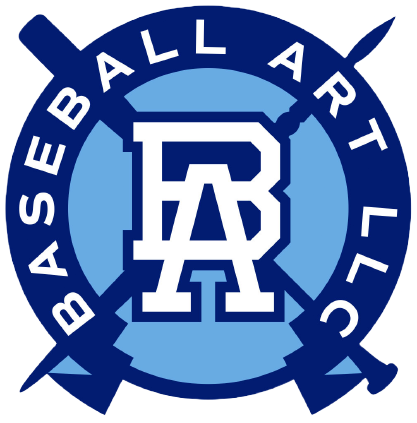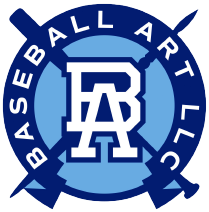Baseball Archeology in Cuba
A Trip to Guines
by Mark Rucker
Visiting Cuba is like tripping in a time machine. We’re not talking about a beach vacation at Veradero, but a visitation to the living, working Cuba. A Cuba, where baseball is woven into the shirts they wear, is the caffeine in their coffee, and the excitement in their voices. And when you are there, you’ll find the time traveler gets a different version of now and then. In Cuba, there is the pre- and post-Revolutionary country, a national history more seen as a continuity today than in the recent past, but still a history divided, one capitalist and one socialist.
The passengers on this small-scale adventure include Sr. Ismael Séne, our magnificent intellectual host with his photographic memory, knowing all things baseball, old and new, Peter Bjarkman, the English-speaking master of Cuba’s modern game, our driver Eduardo, and the camera-wielding author, who planned this jaunt with no guarantee of success.
The inspiration for our one-day trip was a group of photographs from the winter ball season of 1927-1928. They were taken in a ballpark in Guines, a small city of now almost 70,000, 30 km. or so south of Havana. The photos, a group of 16 – 7”x5” prints, mounted on decorative 10”x8” boards, started turning up in Cuba’s big city a few years earlier, in an astounding state of preservation, arriving in small groups, until almost the entire collection was assembled (16 of 18 are present).
The sauna-like climate on the island is rampantly destructive to paper, and photos usually suffer. Though I have been doing photo research in Cuban baseball for over fifteen years, no picture had ever before appeared of Estadio Tropical Cerveza (Tropical Beer Park) in Guines, nor had I seen reference to it, nor had I seen any mention of the photographer, Raphael Santiago of Calle M. Gomez 120, Guines, whose name was embossed in each print. There was never a connection drawn between a ballpark in Havana using the same name, their sponsor being identical.
Then and now photos below, of the entrance to the Guines ballpark. Then: an owner stands before the field gates in 1927; Now: Pete Bjarkman poses in the same location.
The most exciting feature of this group of photographs was not the record of the physical features of the park, nor the parade of old automobiles entering through the decorated gateway, nor the close-up views of the well-dressed fans, nor even the pre-game warm-up activity in front of the stands. Instead, it was a team shot of the Cuba Baseball Club, an integrated professional team from the top league in the country. This club, one of the most amazing to take the field in all of baseball history, was composed of big names from Cuba and an all-star contingent from the U.S. Negro Leagues.Managing “Cuba” was Armando Marsans, one of the first Cubans to wear a major league uniform in the 20th Century, playing 8 years in the American, the National, and the Federal Leagues. Under Marsans were pitchers Willie Foster, newly of the Baseball Hall of Fame, Willie Powell, small and sturdy right-hander, along with Cuban Basilio “The Witch” Rosell. Patrolling the infield and the outfield were Judy Johnson and Oscar Charleston, monster stars both in the Negro Leagues and in Cooperstown, Walter “Steel Arm” Johnson, from the Chicago American Giants, Cubans Peleyo Chacón, who played in Cuba from 1908 to 1932, Cando Lopez, Fransisco Correa, and José Perez. The catcher was Larry Brown, whose defensive skills and strong arm were legendary.
We were hoping we could find the site of this forgotten ballpark, for then the photos would take on more meaning, and we might even find some ghostly evidence of these long-lost players. So, we headed south, past Jamaica, San Jose de las Lajas, and other suburban towns that ring the south side of Havana. Shortly after leaving the hubbub behind, we were passing horse carts on our two-lane road, along with reeking, wheezing agricultural trucks and 1930s tractors. In short order, our tan colored Lada was driving along the main thoroughfare into town, where we stopped at Guines’ modern stadium, almost sparkling with its bright green grass and fresh coat of red and ochre paint. Here are hosted a good number of games annually, involving the Havana Province’s three national series teams, Industriales, Metropolitanos, and Habana during the winter season, which usually runs from November to April. There was no ball game on this day, but the guard on duty was not sure where the old field had been, so he directed us into the center of town for more information.
Then and Now photos below, top: Team Cuba warms up with lefty Willie Foster, throwing in the center of the photo. bottom: the same spot in the ballpark where the warm up occurred.
On we went making inquiries, and found that, indeed, there was an old ballpark outside of town, though no one would know its former name. Heading eastward for a short while, the houses soon grew farther apart, the city street grid disappeared, and after a few twists and turns we were parking across the street from what had been Estadio Tropical Cerveza.
The old entrance had been replaced by a now weather-beaten, stylized gateway, which was connected to a high cement wall painted white. That outer, higher wall joined with the outfield wall to the north, and together they encircled the entire field. “352” was painted on the outfield wall where the cement baseline intersected it, matching symmetrically the right field line.
Another shorter cement wall had been constructed within and parallel to the perimeter structure, separating the field from the spectators, to which were attached to two cement above-ground dugouts. The grass was short, the pitching rubber and home plate still in place, so some kind of ball was still being played here. The baselines were composed of poured cement strips about 4 inches wide, sitting a little above ground level, no doubt a hazard for hustling runners and fielders playing close by. What we were looking at was cement construction ballpark in total disrepair.
Between the eras of the totally wood-framed Beer Park and the present-day ruin, a reconstruction project had occurred, transforming the field into a 1930s-40s art deco style structure, one probably used extensively throughout the 1950s. In between the two parallel cement walls, now separated from the playing field, the crumbling cement foundations for the old grandstands were still clearly in place, forming patterns in the ground like concrete footprints.
Three photos below show where the stands were built on the concrete foundations that exist near the perimeter fences.
We strolled about for most of an hour noting features that other photographs in the group revealed, like the location of the benches in front of the grandstands, or where the Cuba team players warming up five in a row intersected with their opponents, or the fact that the paved street we parked on did not exist in 1928, or how very large the park had been and still was. Back at the time of the photos, Tropical Cerveza could likely have held 10,000 fans. The photos from 1927 indicate that a crowd of such a large size could have witnessed the Cuba team in Guines.
The photos below show where the home team did their pregame exercises: in the 1927 photo, and now.
We got an historical buzz, if not an ectoplasmic visitation. But as I turned my head to leave, I could have sworn that I saw from the corner of my eye the long, tall Willie Foster, arms and legs in motion, throwing warm up tosses to Larry Brown, with Oscar Charleston shouting exhortations from the beyond.

